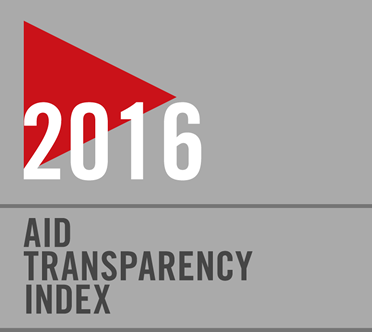Following commitments, a quarter of global aid now meets transparency standards
(WASHINGTON, 13 April 2016) – Five years after the world’s major foreign aid donors committed to robust standards for making their data public and more easily accessible, 25 percent of global aid now meets them, according to a new report from an organization that tracks the transparency of foreign assistance information.
In a ranking of 46 aid agencies and organizations accounting for 98 percent of foreign aid globally, the group Publish What You Fund assessed how they delivered on promises made in 2011 to open up their books by publishing details of their development projects to a common open standard, the International Aid Transparency Initiative (IATI). Publish What You Fund, for its part, uses the information from the IATI Registry and other publicly available resources to make its assessments on whether agencies are publishing their information in a manner that is timely, accessible, comprehensive, and comparable.
Coming first in the 2016 Aid Transparency Index ranking, which is the leading independent measure of aid transparency worldwide, is the United Nations Development Programme (UNDP), with a 93.3 percent transparency score. The U.S. Millennium Challenge Corporation (MCC), one of six U.S. agencies in the ranking, placed second with 89.6 percent, while UNICEF was ranked third at 89.5 percent.
In all, Publish What You Fund ranked 10 donors, representing a quarter of all aid globally, in its “very good” category and thus meeting their commitment to aid transparency made in 2011 at the Fourth High Level Forum on Aid Effectiveness in Busan, South Korea. The other seven are the United Kingdom’s Department for International Development (UK-DFID), the Global Fund, the World Bank-International Development Association (WB-IDA), the Inter-American Development Bank (IADB), the Asian Development Bank (AsDB), the government of Sweden and the African Development Bank (AfDB).
For the first time, all of the U.S. government’s aid agencies that are ranked scored at least as high as the “fair” category, with three of those just short of the 60 percent score needed to rank as “good.” Publish What You Fund noted that with the two biggest U.S. agencies that administer foreign assistance, USAID and the Department of State, there is increased political commitment to meeting transparency goals through a more systematic effort to revamp information systems.
Globally, more than half of the 46 aid organizations covered by the Index still fall into the lowest three categories, scoring below 60 percent and demonstrating that the publication of timely, comparable and disaggregated information about their development projects to the IATI Registry is far from complete.
The report’s authors argue that this will limit the impact of aid, as information is critical to effective policymaking in donor countries, while civil society organizations and journalists in developing countries will continue to face major challenges in accessing up-to-date information about aid programs and holding their governments accountable for how money is spent.
“Clearly, from our analysis, the ‘data revolution’ still isn’t reaching the world’s poorest countries,” said Rupert Simons, CEO of Publish What You Fund. “The 2016 Aid Transparency Index shows that only 10 out of 46 of the world’s largest and most influential donors provided enough information to enable recipient governments to plan, or for citizens to hold their governments to account.”
“Transparency is important for achieving the Sustainable Development Goals and development in general. It is encouraging that there has been a marked improvement in aid transparency – but more needs to be done in order to ensure that development is as effective as possible,” said Helen Clark, Administrator of the UNDP, which leads the Index.
